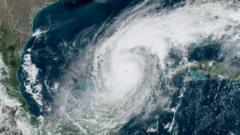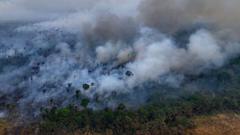A recent study indicates that rising temperatures due to climate change are not only diminishing rainfall but also increasing the evaporation rates, leading to more severe droughts across the globe.
Climate Change Intensifies Droughts: The Role of Atmospheric Thirst Revealed

Climate Change Intensifies Droughts: The Role of Atmospheric Thirst Revealed
New research sheds light on how increased temperatures are exacerbating drought conditions by creating a thirstier atmosphere.
As farmers in the Great Plains and the West survey their fields from above, they see vast circles of green created by center-pivot irrigation systems. However, many of these older setups, often a decade or two out of date, struggle to meet the water needs of today's crops, according to agricultural hydrologist Meetpal Kukal from the University of Idaho. Kukal emphasizes that there is a significant gap between the irrigation capabilities and the increasing demands of crops, particularly as the soil dries out more rapidly than before.
“Atmospheric thirst is driving these changes,” says Solomon Gebrechorkos, a hydroclimatologist at the University of Oxford and lead author of a study published in the journal Nature. The findings reveal that the last four decades have seen rising atmospheric moisture demands contribute to the frequency, intensity, and geographical reach of droughts.
Typically recognized as the outcome of an imbalance between water supply and demand, droughts occur when rainfall fails to replenish surface water adequately. Meanwhile, evaporation—a process governed by temperature, wind, humidity, and solar radiation—removes moisture from the soil. Gebrechorkos describes the misunderstanding in earlier drought studies, which primarily focused on precipitation, leaving out crucial evaporation dynamics: “It’s like trying to manage finances by only monitoring income without accounting for expenditures.”
This new perspective offers a more holistic view of drought phenomena, suggesting that researchers must account for atmospheric conditions alongside precipitation data to better understand the growing challenges posed by climate change.



















